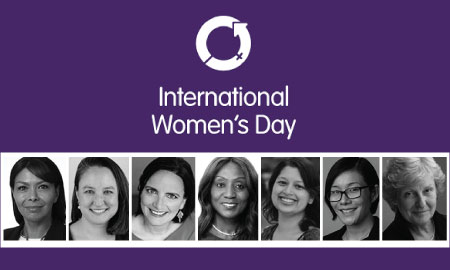Sign up for our free daily newsletter
YOUR PRIVACY - PLEASE READ CAREFULLY DATA PROTECTION STATEMENT
Below we explain how we will communicate with you. We set out how we use your data in our Privacy Policy.
Global City Media, and its associated brands will use the lawful basis of legitimate interests to use
the
contact details you have supplied to contact you regarding our publications, events, training,
reader
research, and other relevant information. We will always give you the option to opt out of our
marketing.
By clicking submit, you confirm that you understand and accept the Terms & Conditions and Privacy Policy
While the government attempts to encourage those who gave up work during the pandemic back into employment amid a continued shortage of labour, law firms and in-house teams are also looking into how they can connect with lawyers considering returning to the workplace after career breaks.
For a long time now, this talented cohort has been somewhat neglected, however this is changing as competition for experienced professionals continues to push up salaries and force law firms to consider how best to attract and retain the best people.
Many of those looking to get back into the workplace, however, still feel that the opportunities they are presented with do not fit in with the demands of family life, or the caring responsibilities they still have.
As part of Obelisk’s recent training programme aimed at supporting lawyers who have taken career breaks to get back into the workplace, we surveyed returners on the main barriers they faced getting back into work.
Top of the list was a lack of flexible working opportunities – an issue cited by 65% of those surveyed. This no doubt contributed to the feeling amongst many that employers were not in fact open to applications from returners, cited by 42%.
The reality for many returners is that they really want to get back into work but discover it is hard to find roles that work for them. The profession might be embracing the idea of hiring returners on a larger scale than before, but they are going to have to think more creatively if they really want to benefit from this untapped talent pool.
Thinking differently
Many of those taking career breaks never wanted to step away from their careers 100%, they still wanted to continue in some way, to keep their skills up to date without pushing them out of balance with what their life required. For those looking to return, we need to be able to design jobs and opportunities that keeps talent engaged.
The profession should be thinking differently about roles. Does the job they are looking to fill really need to be five-days-a-week, nine-to-five? Does it need to be undertaken by just one person or could it work as a job share? Can we rethink the design of jobs in a way that pushes boundaries? For in-house teams facing squeezed budgets and looking at how work can be resourced, what are the alternatives to going to law firms or recruiting full-time employees?
While there is no doubt that the pandemic has made a certain amount of remote working the norm, a default to full-time working with much of that time spent in the office is still the norm and the profession is yet to embrace the kind of flexibility that many are looking for.
Keeping people in work and enticing them back isn’t just about filling gaps in a competitive labour market. Building a diverse workforce brings its own rewards. The whole organisation benefits from the different experiences and perspectives that those who may not have made a linear career journey can bring.
We should value people for their experiences, both in and outside the law. Those who have taken breaks for personal reasons, to pursue alternative careers or care for loved ones are often well-rounded, pragmatic and bring something different to the organisations they worked for.
Looking at the bigger picture, keeping women in the workforce when their children are young can help to close the gender pay gap, which amongst law firms is still persistently wide. A survey by the Next 100 Years project found 84% of women in law believe they won’t see true gender pay equality in their working life.
Part of the problem is women taking time out of the workforce and the incremental experience and salary uplifts that more consistent employment brings.
A supportive culture
In addition to a lack of flexible working, top barriers to going back to work were a lack of confidence (58%) and gaps in knowledge relating to recent legal developments (53%). This demonstrates the importance of supporting returners to build confidence and providing the training needed to fill in any gaps in knowledge.
Some firms and in-house teams are looking at opportunities to provide returners with on the job work experience, ideally with additional training or guidance to them get up to speed quickly. At Obelisk, returners make up 15% of our consultant base – the business was founded in response to the lack of opportunities for women lawyers returning to work after having children. Our years of experience supporting returners has shown us that offering help with continuing education and professional development as well as career advice is all important.
Those wanting to attract returners need to provide a supportive work culture – one that values diversity and inclusion. This goes beyond offering flexible working and includes elements such as offering childcare support and encouraging open communication and trust.
With so many employers now keen for good talent to return, I hope we see far more of them looking at what they can do to attract returners and support them to succeed.
Dana Denis-Smith is founder and CEO of Obelisk Support.
Email your news and story ideas to: [email protected]


.jpg)





.jpg)

